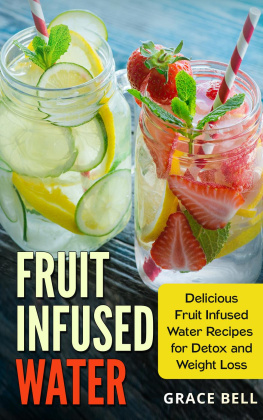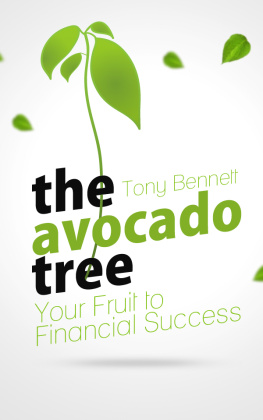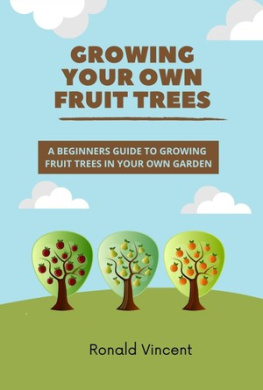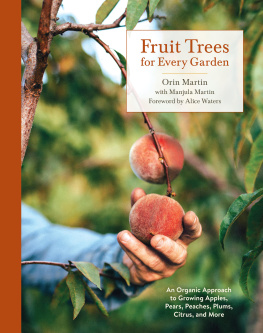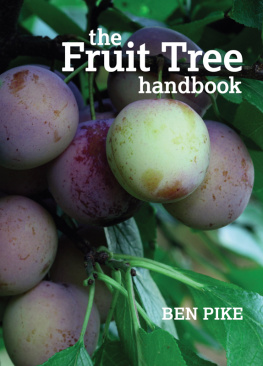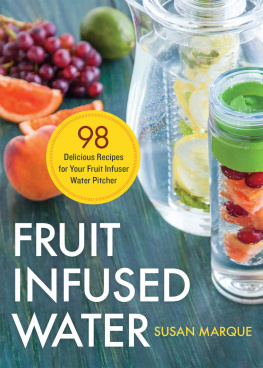How to Plant a Fruit Tree
By Kathy Tunning Dillenbeck
Copyright 2013 Kathy Tunning Dillenbeck
All inquiries should be addressed to:
Kathy Tunning Dillenbeck
125 Wildwood Ln
Thonotosassa, FL 33592
Author Website: http://www.kathydillenbeck.com
All rights reserved.
You are not allowed to reproduce, distribute, or transmit any part of this publication by any means, including photocopying, recording, or other electronic or mechanical methods without the prior written permission of the author, except in the case of brief quotations used in critical review and other non-commercial uses permitted by copyright law. For permission requests, please contact the author.
About the Author
Kathy Tunning Dillenbeck has been growing things since she and her late husband Mark were married. Kathy has loved Meyer Lemons since her friend John Mattson brought her some from his lemon tree. Although most of her gardening is now done in EarthBoxes, when she saw a Meyer Lemon tree at the local nursery, she decided to buy one and plant it in her yard. This book will follow the steps she took to plant it.
FREE BONUS!!!
Lemons are not just for making lemonade. On the contrary, the lemon is one of the most versatile fruits on earth.
Click here to get your FREE report: Lemons-An Amazing Fruit: 25 Ways to Use Lemons .
If the above link does not work, type http://www.gangmillspublishing.com/LemonsAnAmazingFruit.html into your browser.
Table of Contents
Authors Notes
Do you like fresh fruit? I sure do. What better way is there to get fresh fruit than to grow your own? Fortunately, I live in Florida where the climate is conducive to growing one of my favorite fruits the lemon.
I hope you will check my website http://www.kathydillenbeck.com from time to time for other books I have written. Currently, you will find The Ghost of Gang Mills , Green Thumb In A Box , Always Rejoice , Champions of Faith: Abel, Enoch, Noah, and Job , as well as some cookbooks Ive published.
If you have questions or comments on the information offered in this book, please contact me at
Select a Tree
Choose a Good Nursery
When you are planting a fruit tree, especially if you have never done it before, one of your best resources will be your local nursery. Sure, you can get fruit trees at Home Depot, Lowes, and even at Wal*Mart, but do you really want to ask for advice from someone who is very likely making little more than minimum wage and who probably is shifted around from one department to another? Also, do you think that these big stores are vetting their tree stock as well as the local nursery?
Your local nurseries are your best resource for advice and for tree stock. They will also have all of the potting soil, fertilizer, etc. you need for your tree planting. However, I do buy those types of things from the big stores. Chances are your big box stores will carry the same fertilizers, etc. that your local nursery has, but probably at a greatly reduced price. If you dont mind going to two places for your tree-planting supplies, you can always save a few bucks.
How can you find a reputable local nursery? Ask your friends and neighbors. Check Angies List. Ask your county cooperative extension service. Check with the gardening reporter at your local newspaper or radio. Check for local nurseries on-line and see if there are any comments from customers about the service they deliver.
One thing you should consider is whether the nursery offers any guarantees. If they are willing to stand behind what they sell you, you can be sure they are not only selling you a good tree, but also are willing to replace it at no charge to you if there is a problem.
While at the nursery, you might also want to check for any training they have coming up in the near future. Many local nurseries (I know mine does) offer all kinds of training for garden-related subjects. The county extension service also provides such training.
Consult the Nursery Staff
One of your best resources at your local nursery will be their nursery staff. Many of these folks will have the knowledge of a thousand textbooks. They are a veritable encyclopedia of facts about the products they sell, especially how things grow and any special considerations for the area in which you live.
What questions can they answer for you?
1-What varieties are there in the fruit tree(s) you intend to buy and what are the pluses and minuses of each?
2-How big will the tree get, not just height, but how wide the branches will extend?
3-How deep should it be planted, i.e., how far up the stem should the soil come?
4-How long before it produces fruit?
5-How often should it be fertilized?
6-What is the best fertilizer to use?
7-Does it require any other supplementation?
8-When and how should it be pruned?
9-How often should it be watered?
10-What pests and other problems could attack it and what can you do about them?
11-How long is the tree expected to bear fruit productively?
12-What is the lowest temperature it can tolerate?
13-What is the best way to protect it if the temperature is expected to get that low?
Choose the Tree Type
There are lots of factors that should be taken into account when you are deciding what tree type to plant:
1-Is it suitable for your climate?
a---Some fruit trees require a certain number of chill hours, i.e. there have to be a certain number of days where the temperature is 45 or colder.
b---Some fruit trees cannot thrive is the temperature goes below a certain temperature.
2-What root stock type do you prefer to plant?
a---bare root
b---balled and burlapped
c---potted (my preference)
3-How big will the plant get?
a---dwarf (6 10 feet high)
b---semi-dwarf (15 feet)
c---standard (30 feet)
4-How much maintenance is required?
a---does it have a tendency toward disease?
b---is it susceptible to certain pests?
5-How much fruit will it produce? Will you be able to handle all it produces?
6-Is it self-pollinating or cross-pollinating? If cross-pollinating, you will have to buy two trees.
Choose the Tree
Once you have decided on the type and variety of tree you want, you must select the actual tree you will take home to plant. When deciding, consider these factors:
1-Is the foliage in good condition?
2-Is the main stem straight?
3-Is the stem healthy-looking with no dark, sunken areas?
4-Is it the biggest tree you can buy with your budget?
The Lemon Tree I Selected
The tree I selected was a Meyer Lemon tree. Meyer lemons tend to grow a bit bigger than the lemons you generally see in the grocery store. The fruit is really juicy and tastes like a cross between lemons and oranges or lemons and tangerines, i.e., it is not quite as tart as regular lemons. The skin is thinner than the regular lemons (known as Eurekas). Since this tree was large enough that it already had fruit and blossoms on it, I am really looking forward to enjoying some of these marvelous lemon this coming fall.

When I first brought the tree home, I had to wait several weeks to plant it because I had to inquire of my park manager where I could put it on my lot. This tree was in such good shape, that delaying the planting seems to have no effect on the tree.
During the course of the time I was waiting, the temperature went below freezing. This is fairly unusual in Florida where I live. I just picked up the tree and brought it in the house. Now that it has been planted, I will not be able to do that next time. Ill have to cover it with blankets.
Next page

